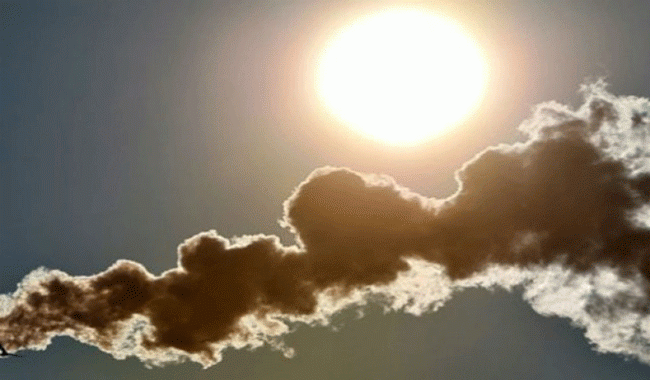While recurrent floods and droughts have wreaked havoc across different provinces of the country over the past few years, global warming temperatures accompanied by rising sea levels pose a particular threat to Karachi — our largest city by the sea. This past year, evidence from various national and international sources, has cautioned that the biggest threat facing Pakistan is not terrorism but climate change instead.
One major impact of unchecked climate change is the potential havoc it can unleash on Karachi. With a population of approximately 17 million people, Karachi is not only our largest city, but also the economic hub for the country. It accounts for over 40 per cent of the nation’s GDP, and contributes around half of the country’s entire tax revenues. Therefore, environmental destruction of it would be a shock that Pakistan may understandably not be able to recover from.
Besides witnessing changing precipitation levels, and record high heatwaves in recent years, the looming threat to Karachi is the rising sea levels due to global warming. Karachi is located next to the Indus River Delta, where the Indus flows into the Arabian Sea. This delta is now almost at the same level as the Arabian Sea, which is causing seawater intrusion and creating havoc to the complex ecosystem of mangroves in the region. Mangrove forest cover has decreased from 400,000 hectares around the time of independence to 70,000 hectares due to not only rising sea levels, but also due to land grabbing and ill-planned development schemes. Development of the Port Qasim Power Project along the coastline of the Arabian Sea, is one such example.
Changes in the Indus delta’s ecosystem, caused both by man-made developments and climate change, have already displaced millions of Pakistanis who once lived in this region. Mangrove deforestation is particularly alarming since it plays a vital role in preventing erosion and buffering against natural calamities like cyclones and tsunamis.
While Karachi did experience a devastating tsunami back in the mid-1940s, a similar natural disaster would now be much more devastating. The UN recently conducted simulations based on a hypothetical 9.0 magnitude quake in the Indian Ocean, where the Arabian and Eurasian tectonic plates meet off the coast of Pakistan. This simulation event in turn triggered a catastrophic tsunami that could reach Karachi within one and a half hours, and be powerful enough to destroy the entire city. No early warning system could effectively evacuate the massive city, if such a natural calamity were to suddenly strike.
Moreover, the threat of rising sea levels exacerbated by climate change continues to loom over the city. Some parts of Karachi’s Malir are apparently going under water. With the current rate of climate change and the accompanying sea level rise, Karachi has an estimated 35 to 45 years before it completely submerges into the Arabian Sea, according to recent research by our National Institute of Oceanography.
Despite a range of pressing problems plaguing the country, Pakistan thus has little choice but to patronise its response to climate change in order to mitigate major environmental threats, such as that facing Karachi. Yet, compared to the annual defence budget, our government allocates a meagre proportion of funds to combat climate change, despite the potential seriousness of the threat, and the demonstrated damage already wreaked on our country due to climate-related disasters. Besides greater financial and political resolve to tackle climate change, Pakistan also needs greater assistance from specialised international agencies to help design and effectively implement comprehensive mitigation programmes, to avert unprecedented levels of hardship and catastrophe, which would be unleased, if a city like Karachi were to be lost to the sea in the coming decades.
Source: The Express Tribune
